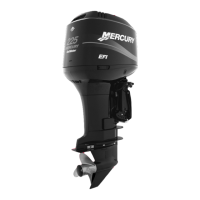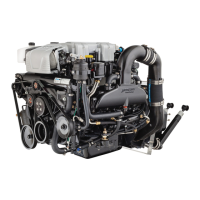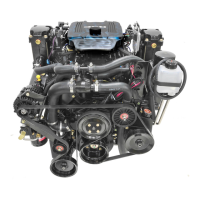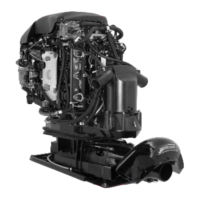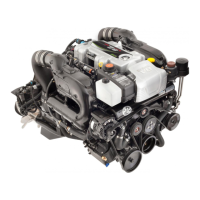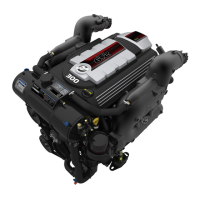OPERATION
68 eng
Operating in Saltwater or Polluted Water
We recommend that you flush the internal water passages of
your outboard with fresh water after each use in salt or polluted
water. This will prevent a buildup of deposits from clogging the
water passages. Refer to Maintenance ‑ Flushing the Cooling
System.
If you keep your boat moored in the water, always tilt the
outboard so the gearcase is completely out of water (except in
freezing temperatures) when not in use.
Wash the outboard exterior and flush out the exhaust outlet of
the propeller and gearcase with fresh water after each use. Each
month, spray Mercury Precision or Quicksilver Corrosion Guard
on external metal surfaces. Do not spray on corrosion control
anodes as this will reduce the effectiveness of the anodes.
Operating at High Elevations
IMPORTANT: To prevent serious damage to the engine caused
by a lean fuel mixture, do not operate your outboard (if the jets
were changed for high elevation) at a lower elevation unless the
jets are changed again to correspond to the new elevation.
Operating your outboard at an elevation higher than 750 m
(2500 ft.) above sea level may require a carburetor jet change
and/or different pitch propeller. Consult your dealer. This will
reduce the normal performance loss experienced as a result of
reduced oxygen in the air causing an overly rich fuel mixture.
Engine Break‑in Procedure
IMPORTANT: Failure to follow the engine break‑in procedures
can result in poor performance throughout the life of the engine
and can cause engine damage. Always follow break‑in
procedures.
Break‑in running time: 10 hours

